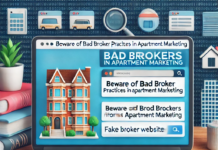Well, it’s official – Google AdWords is now Google Ads. The search engine behemoth announced earlier this summer that it would be rebranding to simplify its various advertising options. The new name – complete with a new logo, new URL, and new Help Center address – is just the beginning of the changes Google has made to its search engine marketing repertoire.
 First, a little background. For those who aren’t familiar with Google AdWords – let alone Google Ads – the platform allows advertisers to bid on certain keywords so that their business’s (or client’s business) clickable ads show up in Google search results. The service was launched nearly 18 years ago a simple mission: to make it easier for people to use the web to connect with local businesses, delivering valuable ads that were relevant to what people were searching for in the moment.
First, a little background. For those who aren’t familiar with Google AdWords – let alone Google Ads – the platform allows advertisers to bid on certain keywords so that their business’s (or client’s business) clickable ads show up in Google search results. The service was launched nearly 18 years ago a simple mission: to make it easier for people to use the web to connect with local businesses, delivering valuable ads that were relevant to what people were searching for in the moment.
Since Google AdWords first launched, the world of internet browsing has seen a major shift from desktop to mobile, and people quickly switch from searching for products to consuming content, playing games, watching videos, and more. In Google’s words:
“As a result, marketers have more opportunities to reach consumers across channels, screens and formats. The opportunity has never been more exciting, but it’s also never been more complex. Over the years, Google ads have evolved from helping marketers connect with people on Google Search, to helping them connect at every step of the consumer journey through text, video, display and more.”
That evolution included the introduction of additional advertising products, like DoubleClick, Analytics 360, DoubleClick for Publishers and DoubleClick Ad Exchange. As part of the recent rebranding, these services consolidate and simplify Google Ads. More on that below.
Google AdWords Becomes Google Ads
The Google AdWords rebranding demonstrates Google’s capabilities as an advertising platform. The rebrand goes beyond copy – Google Ads represents the full range of campaign types available, including Search, Display, and Video.
Google Ads will also make it easier for small business owners to learn how to use the service and get started with online advertising. The default ad experience, Smart campaigns, allows small businesses to “create ads in minutes and deliver real results” It does so by tailoring the innovation and technology in Google Ads to small business owners, who may not be familiar with the lingo and user experience in the way that digital marketers are. Google shares the Smart campaigns experience in the video below:
Does this mean that digital marketers who have years of experience with Google AdWords will suddenly find themselves client-less? Of course not. Smart campaigns represent an opportunity for small businesses owners to understand the power of online advertising. Eventually, they may turn to experienced marketers to take their campaigns to a more sophisticated level.
DoubleClick & Google Analytics 360 Suite Are Now Google Marketing Platform
Google Marketing Platform is Google’s solution to digital marketers juggling changes in technology. For example, the platform offers a solution accounting for an explosion of channels, formats, and data. Plus, the platform accommodates the need to put customers’ privacy first when it comes to planning and executing campaigns. The new service combines DoubleClick and Google Analytics “to help you plan, buy, measure and optimize digital media and customer experiences in one place.”
According to Google, the new platform will help marketers deliver more effective advertising while respecting customers’ privacy and giving them control over their data. Google Marketing Platform will also include tools and insights to help marketers better understand their customers, a priority revealed in a recent Google survey of global marketing organizations.
Google Marketing Platform features a new “Integration Center” that easily connects multiple products. For example, now DoubleClick advertising and Google Analytics connect. This helps marketers apply insights and data gathered in Analytics and better inform their campaigns – all in one service. The platform also supports 100+ integrations with exchanges, measurement solutions and other technology providers. Ultimately, these steps make it simpler to choose what media to buy and how to measure it.
Other changes that accompany the arrival of Google Marketing Platform include Search Ads 360 (formerly known as DoubleClick Search). Search Ads 360 will continue to help marketers plan, buy, and measure search campaigns across Google and other search engines. Google is also introducing Display & Video 360, which brings together features from display advertising products like DoubleClick Bid Manager, Campaign Manager, Studio and Audience Center, and allows marketers to execute ad campaigns, end-to-end, in one place.
DoubleClick for Publishers & DoubleClick Ad Exchange Become Google Ad Manager
In an effort to become an ad platform “for the next generation of content,” Google unified DoubleClick for Publishers and DoubleClick Ad Exchange under one platform, Google Ad Manager. This action breaks the constraints of ad servers and Sell-Side Platforms. Additionally, the combined platform helps build new programmatic solutions. According to Google, Ad Manager is “a complete ad platform that helps you earn more and grow revenue, no matter how you sell.”
Ad Manager functions as a complete sales channel that allows users to optimize revenue across all buyers. Additionally, Ad Manager helps monetize the new places and platforms that we watch, play, or engage with content. In Google’s words:
“Ad Manager gives you a single platform for delivering, measuring and optimizing ads wherever your audience is engaging—including connected TVs, Accelerated Mobile Pages (AMP), mobile games and other apps, and platforms like YouTube and Apple News.”
Finally, Google is using Ad Manager to guard against issues that previously plagued digital advertising agencies, like ad fraud. Ad Manager contains over 30 controls that help users manage their ads. Plus, the controls ensure they meet brand values, which prevents spam and malware. All of these steps help prevent problems that degrade user experience and hurt a company’s reputation.
Resources for Those Just Getting Started with Google Ads
As with everything in this digital age, change happens quickly – and often – and Google’s advertising products are no exception. For example, the internet giant paved the way toward a more streamlined online advertising experience. Plus, the platform helped lower the entry barrier so that small businesses can seize the opportunity. Finally, Ads also makes it easier for veteran marketers and agencies to execute sophisticated campaigns.
Google AdWords may now be Google Ads, but the process of familiarizing yourself with the platform remains the same. For those getting started in the world of online advertising, we gathered some resources that help navigate a successful path.
- Google Academy for Ads: Fast and easy training from Google
- PPC University: WordStream’s free courses on pay-per-click marketing
- Udemy’s Google AdWords for Beginners: Video tutorials on everything you need to know to get started with Google AdWords (now Google Ads). This course is not free, but is often on sale.





